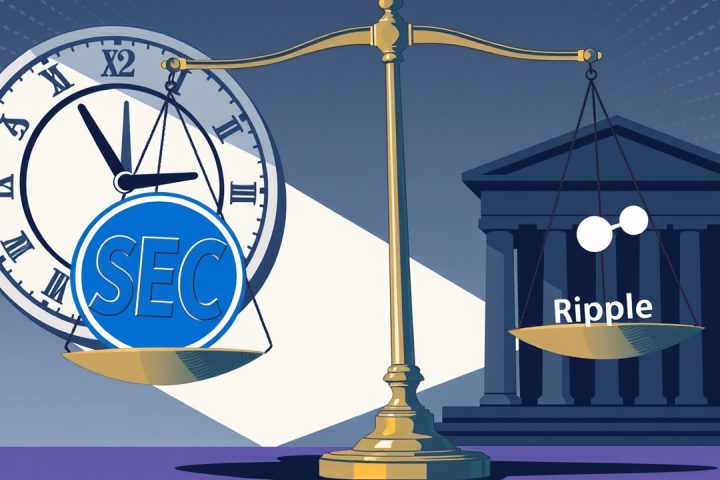Introduction
The perspective presented here represents the author’s personal insights and does not reflect the official stance of crypto.news.
Risks in the Web3 Landscape
Engaging with the web3 landscape comes with its own risks, as history shows that countless users have faced scams or near misses almost immediately after entering the space. Typical traps include:
- Deceptive MetaMask notifications
- Seemingly genuine decentralized exchange swap links that are actually fraudulent
- Dubious bridge pages promoted by search engines
Just last year, scams in the cryptocurrency realm were estimated to be responsible for approximately $9.9 billion in illicit earnings. Chainalysis has indicated that this figure could potentially reach an unprecedented $12.4 billion when more comprehensive data becomes available. The sophistication of these scams is evolving, with perpetrators deploying increasingly convincing phishing tactics, counterfeit decentralized finance platforms, and sophisticated social engineering, making it harder for even seasoned investors to discern the truth and resulting in significant financial losses that erode trust within the community.
Community Attitudes Towards Scams
In an unsettling development, many within the crypto community tend to dismiss these incidents as part of the inherent risks of engaging with this burgeoning sector. This attitude stands in stark contrast to the world of traditional banking—where a mere one-in-ten chance of encountering a fraudulent website would incite public outrage. In the crypto space, however, a typical reaction seems to be to nonchalantly suggest,
“stay safe, anon,”
while hoping for the best.
The Need for Enhanced Security Measures
The technology to identify dangerous phishing sites, fraudulent smart contracts, and malicious bridge links already exists but is often viewed as a supplementary measure rather than an essential component of the ecosystem. Many users risk losing substantial amounts of money each week by engaging with what they believe are trustworthy exchange interfaces—a situation only averted at times by security features built into web browsers that alert them just before they finalize a transaction.
It’s crucial to understand that framing phishing as merely a personal security issue overlooks its broader impact on the cryptocurrency market. The stagnation of retail adoption cannot be attributed to inadequacies in scalable technology. Instead, it arises from users’ lack of confidence in the safety of their investments. While some folks may argue that additional security measures create central points of failure, there is already widespread dependence on various infrastructure providers, wallets, indexers, and other critical components. The argument against implementing robust phishing protections due to concerns over the ethos of decentralization holds little weight in light of the high stakes involved.
Post-Quantum Security Threats
Additionally, the looming threat of post-quantum security is an issue that deserves more attention. The U.S. government has mandated that all digital systems transition to post-quantum cryptography by 2030, with older algorithms phased out by 2035. Many existing blockchain infrastructures are effectively living on borrowed time. Combined with the rise of phishing schemes, this creates a precarious situation that could lead to significant trust issues in web3. If the industry continues to lose billions due to fraudulent links, it stands to lose credibility in a world defined by quantum computing.
Conclusion
A common excuse is that users must simply exercise greater caution. While it is wise for pedestrians to look both ways before crossing a street, traffic regulations and lights exist for good reason. Expecting all new crypto users to instantly recognize phishing links is impractical, especially as fraudsters become increasingly adept at mimicking trusted platforms. Despite years dedicated to advancing technology in areas like scaling, composability, and cross-chain liquidity, the predominant user complaint remains:
“I lost my coins.”
These scams are no longer confined to exchanges or flashy DeFi applications; they are infiltrating adjacent sectors and undermining confidence across various ecosystems. While bridges and validators are obvious targets, other industries such as telecommunications, energy, the Internet of Things, supply chains, and even defense systems that interface with blockchain technology are also becoming vulnerable entry points for these attacks. Each new integration escalates the potential risk of compromise, further eroding public confidence in the technology.
For those leading projects in this arena, two uncomfortable truths loom large. Firstly, the shift to quantum resistance isn’t a far-off objective; it’s becoming a pressing regulatory requirement within the next decade. Secondly, the ongoing high-profile phishing attacks and credential theft campaigns chip away at user bases, credibility, and overall locked value—damage that silently accumulates over time, making recovery increasingly difficult.
Now is the crucial moment for the web3 sector to invest an equal measure of innovation and financing into security architecture as it does in yield farming, NFT initiatives, and cross-chain liquidity developments. It is untenable for web3 to present itself as the future of finance and data infrastructure while relegating phishing issues to mere user error. The time has come for the community to take accountability.
In years to come, it’s likely we will look back and question why the industry tolerated such glaring vulnerabilities for so long and why it failed to tackle phishing on a larger scale. The optimism lies in the knowledge that this challenge is surmountable with proper prioritization and design choices. The remaining question is whether the sector will take proactive steps now or wait until the next major security breach compels a reaction.
— David Carvalho




